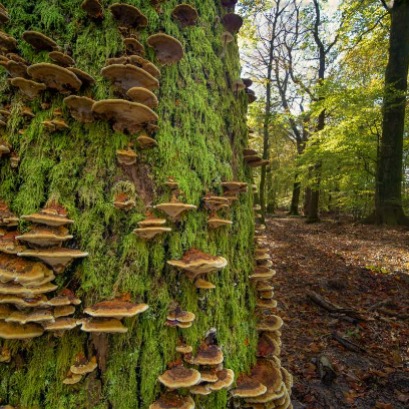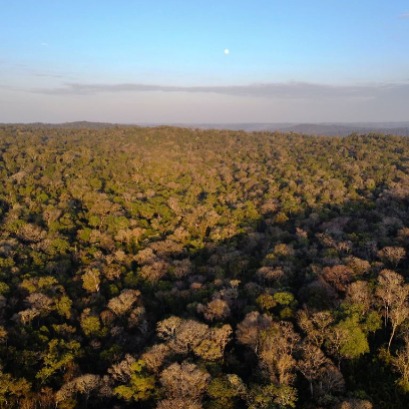
New study discovers that trees do not grow alone; Underground, their roots connect with fungi in a symbiotic relationship that allows them to share nutrients, especially in poor soils and difficult conditions
A study by the University of Zurich found that trees that form alliances with two types of fungi can better bear climate change and expand to new areas.
? Trees connect with two types of mycorrÝzic fungi ? This allows them mycorrÝzic roots and fungi. This symbiosis allows trees to exchange nutrients with fungi, increasing their resistance to adverse conditions such as poor soils or prolonged droughts. However, some species have led this strategy even further: they associate with two different types of fungi at the same time. Two fungi are better than a researchers from the University of Zurich (UZH) and the Swiss Agroscope center discovered that some trees establish simultaneous relationships MycorrÝzic of different types, which improves their adaptation capacity. They ran more than 400 species of trees and found that those with double alliance were more effective facing water and nutrient shortages. The advantage is clear: having two fungal allies is like having two sources of groundwater. If one fault, the other acts as support. This dual symbiosis provides trees with a more extensive root system, allowing them to access areas of the soil that others do not reach. Territorial expansion capitability The phenomenon, nicknamed bigamy by researchers, not only improves resistance. It also allows trees to colonize new territories where other species do not survive. The root expansion facilitated by the double fungal association gives them a clear competitive advantage. It does not matter their evolutionary lineage. The relevant thing is adaptability: trees capable of associating with multiple types of fungi are more resilient, more aggressive colonizing and more effective in changing ecosystems. RESILIENCE IN FRONT OF CLIMATIC CHANGE MEASURE THAT THE CLIMATE CHANGE TRANSFORMS The selection of forest species for sustainable projects, especially in regions threatened by desertification. With a more efficient use of water and nutrients, these trees not only survive, but prosper in contexts of climate stress. Impact in ecosystems The benefit is not individual. Trees with double mycorrÝzic alliances also improve soils, prevent erosion, and encourage biodiversity. They become ecosystem engineers, capable of transforming deteriorated landscapes into life -rich environments. These associations strengthen the complete ecosystem, not just the tree. From insects to microorganisms, many species depend indirectly on these underground connections. And if we apply this strategy beyond forests? The finding raises valuable questions: ? How many plant species could benefit from multiple fungal associations? regenerative agriculture, ecological restoration programs and the fight against desertification.
IT MAY INTEREST YOU
 How satellites help measure carbon stored in world forests
How satellites help measure carbon stored in world forests
A recent study details that these tools manage to monitor large extensions of vegetation and provide relevant information to anticipate changes in global climate
 The planet is heating and in the trees is the solution to generate green islands for resilient cities
The planet is heating and in the trees is the solution to generate green islands for resilient cities
While accepting the hard truth that 2024 marked the first year in which global temperatures exceeded 1.5 ░ C threshold established by the Paris Agreement, recognizing the vital role of forests and trees in climate regulation has never been more crucial
 An inverted forest of millions of trees has held Venice for more than 1600 years
An inverted forest of millions of trees has held Venice for more than 1600 years
It is an millenary engineering work. For more than 1,600 years, Venice remains firm thanks to a unique foundation system in the world. These are millions of wooden posts stuck with the tip down in the muddy background of the lagoon. This base, which looks like an inverted forest, is composed of aler, oak, aliso, pine, fir and elmo. Thanks to this millenary engineering work, the city was officially founded on March 25, 421. Taking advantage of the laws of physics, monumental buildings have been built on land that seemed unstable. Only Rialtos bridge rests on 14,000 piles, while the Basilica of San Marcos sits over 10,000 oaks. No one knows how many wooden posts there are in total under the entire city, but the Venetian foundations have more than 16 centuries fulfilling their function, unlike modern materials such as concrete or steel, which have a projected life of 50 years on average as according to Alexander Puzrin, professor of geomechanics and geosystem engineering at the Federal Polytechnic University of Z˙ric.





















